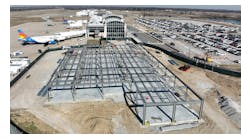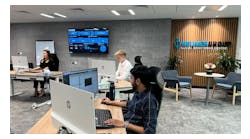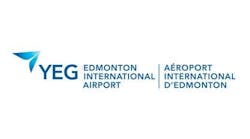How Airports Can Exceed Passenger Expectations During the Holiday Travel Season
Air travel continues to grow significantly. Earlier this year, the International Air Transport Association (IATA) found summer air travel reached record highs with global demand rising by 7.8 percent in June, compared to the year before. As the winter holiday season approaches, this increased demand is expected to continue and passengers will likely continue to face the holiday travel challenges of years past, such as weather cancellations, crowded check-ins and security areas. This surge in traffic, however, also gives airport operators the opportunity to find ways to continue to meet and exceed passenger expectations. Although airports want to build better relationships with their passengers, there is currently a misalignment in terms of what airports think passengers want, versus what they really want from an airport, beyond their preferred choice of routes and destinations.
However, the good news is that if airports are willing to listen, passengers are willing to make their demands clear about how they'd like the travel experience to be improved. ICLP, a Collinson Group company, surveyed airports and passengers across the US, UK, France, Singapore, Germany, Hong Kong and the UAE, to gauge how airports can best build relationships with customers. The findings revealed the opportunity for airports this holiday season – encouraging them not only to spend more time at airport terminals, but more money too.
The following highlights key findings from the survey, as well as my views on how airports can increase passenger satisfaction ahead of the winter holiday season.
Rewarding loyal customers
Forty percent of passengers stated that they would be interested in joining an airport loyalty or rewards program, highlighting a missed opportunity as only 7 percent of airports recognized this as a factor in choosing where to fly to and from. Furthermore, nearly two thirds (60 percent) of passengers welcome receiving airport shopping or restaurant offers, compared with 10 percent of airports that believe this was an important factor in influencing choice.
Having a rewards incentive in place for customers who travel frequently through an airport makes a difference, especially in metropolitan areas such as the San Francisco Bay Area where there are three different airports to choose from, or where smaller regional airports are working to attract customers from larger international airports. Lehigh Valley International Airport in Pennsylvania, for example, offers a preferred parking program for passengers who fly out of the airport 15 times in a calendar year. In Florida, Gainesville Regional Airport offers a special grand prize each month to the passenger who completes the most roundtrips to and from the airport. Other prizes, such as tickets to the Butterfly Rainforest at the Florida Museum of Natural History or VIP access to First Friday in downtown Gainesville, are rewarded randomly to members who record at least one trip in a month, spreading appreciation to customers at different engagement levels.
Meeting customer demand for increased choice
Similar to the above noted difference in perception around reward offerings, the findings also revealed a misalignment between airports and passengers when it comes to food and beverage choices. The findings indicate that passengers are increasingly looking for a range of food and beverage outlets at the airport, with a significant 48 percent citing this as something that influences their decision in choosing an airport. This starkly contrasts with the airport respondents, none of which thought that food and beverage range influenced passengers’ decisions.
Customers have never had such a wide selection available to them at the touch of a finger. As a result, they have come to expect a broad range of choices in everything from how to check-in for a flight, to transportation alternatives for getting to and from the airport. Once they’ve passed security, this expectation continues with an equal desire for a wide choice of food and drink outlets offering everything from travel essentials, healthier options, to more luxurious dining experiences.
Personalizing the customer experience
The findings show that while all the airports surveyed offer passengers free public Wi-Fi, less than half (48 percent) collect valuable data from these passengers who use it. Furthermore, while 86 percent of passengers would willingly share their personal information, only 27 percent of airports use that customer data to personalize communications.
By collecting passenger data, airports can personalize communications. This helps to drive better passenger engagement and relationships that in turn secure longer-term loyalty and increased passenger dwell time and spend. For example, airports can send travel alerts with relevant, useful information to passengers on the day of travel, such as letting them know about traffic congestion on the way to the airport, information about airport parking, or severe weather updates which may cause flight delays.
At a time when ancillary revenue has never been more important for airports, offering advance discounts for shopping and dining outlets can help to increase passenger spend in the terminal. Forty-two percent of passengers surveyed identified this as a positive, and 45 percent said that receiving offers or discounts in advance of traveling would entice them to spend more. This is particularly pertinent during the holiday season, when there is often the need to pick up some last-minute gifts at the airport.
As airports continue to face operational challenges associated with record-breaking traffic and pressure to differentiate from competitors, it’s essential to close the gaps in what airports think customers want and what customers actually expect from their airport experiences.
By understanding the factors that motivate passengers, like retail and food outlets, travel retail offers and a more personal experience, airports can look to increase influence on customer behavior.
Airports have a great opportunity to examine the ways in which they engage with and reward passengers, delivering better experiences that increase dwell time and spend, keeping both airports, their retailers and passengers happier this holiday season.
Phil Seward is Senior Vice President for the Americas at Collinson Group.






